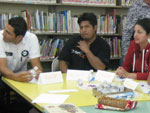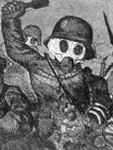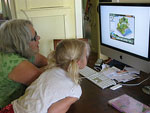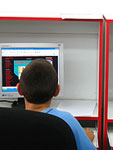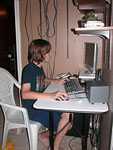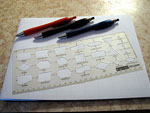(Note: This blog entry is the second part of a six-part series. Read more on using games in the classroom in parts one, three, four, five, and six.)
The first part in this series considered resources for finding simulation games. Once a potentially suitable sim has been found, however, it still needs to be tested and evaluated for classroom use. In other words, the teacher needs to play-test it. While teachers do not have to be experts in playing games they assign in class, they must be familiar with how those games play and how they represent reality. With this in mind, this segment addresses the most important considerations when evaluating a game for classroom use.
Evaluating Simulation Games
There are educationally useful computer games that are not simulation games because the games do not to any significant degree represent real-world systems and situations. In general such games tend to focus on teaching factual content. Simulation games, however, offer models of real-world systems, relationships, and scenarios. Their ability to immerse players in dynamic interpretations of the past is their primary strength. Therefore, the most critical question for a teacher evaluating a simulation is: How reasonably does the game simulate the aspects of the real world that will be studied?
Tip One: Do Accuracies Outweigh Inaccuracies?
This is not an all-or-nothing proposition for any simulation. There is no such thing as a completely accurate interpretation of the world, regardless of whether that interpretation is encapsulated in a simulation or some other form of media.
The real issue for a teacher is whether the core gameplay defensibly models the real world in ways that address the curricular goals of the class.
The real issue for a teacher is whether the core gameplay defensibly models the real world in ways that address the curricular goals of the class. Mission US: For Crown or Colony, for example, could be cited for any number of inaccuracies, particularly issues of oversimplification. The views presented by the characters are not particularly sophisticated; the player tends to encounter exceptional figures rather than average ones (Phillis Wheatley, for example); in these ways the game could be said to mislead.
Ultimately, though, the core gameplay suggests that there were conflicting opinions on British policies in colonial Boston that could be grouped into broad categories and that tensions developed over how to deal with these policies. This core of the game is defensible; it is a point of view that can be supported with weighty evidence. By this standard, For Crown or Colony is a valid classroom simulation game. Equally as important is that even the flaws themselves in a game’s interpretation serve a useful purpose, providing valuable opportunities for students to engage in criticism. Ideally, historical criticism involves both supporting the reasonable elements of an interpretation and challenging the unreasonable. In practice it is very hard to get students to challenge the interpretations of texts and teachers. It is far less intimidating for students, however, to challenge the flaws in a game.
If the student played the game uncritically and came away accepting its main historical points, would those be reasonable?
Even with this criterion a teacher has considerable leeway when determining if a game’s version of the past is reasonable enough. Each teacher will ultimately have to decide whether the combination of accuracies and inaccuracies in a game is appropriate for their class. Still, a helpful general guideline when evaluating a simulation is to consider the worst-case scenario: if the student played the game uncritically and came away accepting its main historical points, would those be reasonable? If so, then the game is a contender for classroom use and lessons can be planned to refine students’ views of the game. If not, it may be better to find a different game.
Tip Two: Can Students Easily Grasp Major Concepts?
For example, if someone played Sid Meier’s Railroads uncritically, they might walk away with the sense that the 19th-century development of the railroad was driven by powerful companies competing with one another to connect various resources and markets by rails in order to maximize profits. Flaws aside, that’s a reasonable impression. A real-time strategy game like Age of Empires, on the other hand, suggests that all civilizations are engaged in a mad dash to exhaust the world of resources and crush their enemies with overwhelming numbers and technology. On a dark day some may suspect this to be the case, but it is a very problematic generalization and thus, Age of Empires is a more problematic game to use for a history class.
This general guideline is not meant to suggest, however, that students should ever be left in a position to receive the messages of a game uncritically. Accordingly, even when a game’s interpretation of the past passes a teacher’s standards of “reasonable enough,” it is important to be aware—and as part of the process of encouraging critical thinking, make students aware—that simulation games are constrained by their very medium to provide certain interpretations of the past.
Tip Three: Remember, Simulation Games are Simulations
First, simulation games, because they are games, often tend to deal with clear-cut goals: build this city, raise this amount of wealth, win this battle, manage this conflict. While historical actors certainly could have such clarity of purpose, games tend to present historical roles, goals, and methods for achieving goals with an idealized precision and accuracy. This is, in fact, one of the great strengths of simulation games as a representational medium, but teachers and students should still consider and analyze potential differences between the game and reality in this respect.
Finally, it’s important to remember that simulation games are one powerful tool for studying the past.
Second, simulation games generally focus on making trade-offs between quantifiable resources—they are computer models, after all, and computers are nothing more than billions of binary switches combined to magnificent effect. This can lead to all manner of terrific insights about humans and systems, but often at the expense of the historical narrative of what actually did happen. This is not a weakness, per se. Indeed, understanding that the past was not pre-determined and humans had a variety of options, albeit within a set of constraints, is a strength of simulation games. Nevertheless, it is important that teachers and students consider the difference between historically valid narrative, which attempts to reproduce what did happen and why, and a historically valid simulation, which attempts to model the variety of things that could have happened and why.
Finally, it’s important to remember that simulation games are one powerful tool for studying the past. They are not the only powerful tool and any rich environment for studying history should include a balanced variety of resources including primary sources, quantitative data, historical narratives, images, and/or film, among others. Certainly, it should be at the heart of 21st-century history for students to reconstruct the past critically through a wide variety of media.
Considering Ease of Play and Time Requirements
Given the constraints of the classroom, the time required to learn and play the game meaningfully is perhaps as important as the reasonableness of the game’s interpretations. There are no hard and fast rules for determining the difficulty of a game. While some students may find a game easier to play than the teacher, it is simply not the case that adolescents are categorically skilled at playing computer games. The teacher must consider how long it will take to learn to play a given game and make preparations to instruct students who have difficulty. Likewise, there is no simple formula for assessing how long it will take to play a game sufficiently to understand and analyze its models. The minimum amount of time required to play a game is not the same as the amount of time needed to appreciate a game in-depth.
It is simply not the case that adolescents are categorically skilled at playing computer games.
As an effort to bring some order to this uncertainty, this segment concludes with a rough categorization of games (with examples from U.S. history) according to the amount of time needed to learn and play them. Three caveats are in order. First, these are estimates based on my own classroom experiences; others’ experiences will vary. Second, if the resources of a school allow it, the time required to play a game does not all need to be class time: students can also play on their own in labs and for homework (again, if resources allow). Third, these time estimates assume each student learns and plays the game. As we will see in future installments, effective simulation lessons can be taught in which the teacher runs the game and the whole class participates in making decisions. These sessions will take less time to execute.
Category A: Short and Simple Browser Based Simulation Games (less than 30 minutes)
These games are relatively simple to learn and play.
Category B: More Detailed Browser Based and Simpler Commercial Simulation Games (45 minutes to two hours)
These games require a bit more time to learn and/or play and consist of lengthier browser-based games and less complicated commercial desktop games.
Category C: Commercial Simulation Games (two to six hours)
Full commercial games that require time to learn to play and additional time to actually experience gameplay in detail.
- Empire: Total War (commercial)
- Democracy 2 (commercial)
- President Forever and Congress Forever (commercial)
Category D: Complex Simulation Games (four to ten hours)
The most detailed and sophisticated of the simulation games. Generally speaking, teachers new to using simulations in the classroom should postpone games in this category until they are comfortable using simulation games in the classroom
- Making History: The Calm and the Storm (commercial)
- Hearts of Iron II and Hearts of Iron III (commercial)
- Birth of America I and Birth of America II (commercial)
- American Civil War—The Blue and the Grey (commercial)
The third part of this series will survey instructional strategies for teaching students to play simulation games.
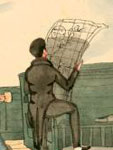
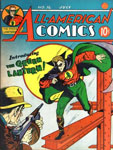


 Comic books, therefore, can help diversify the teaching of American history and allows teachers to address important issues in a novel yet useful way. However, educators should take caution. Over the last few decades, comic books have shifted to a more mature audience and as a result the depiction of violence has become more graphic. Similarly, educators should be mindful of issues or artists that oversexualize characters.
Comic books, therefore, can help diversify the teaching of American history and allows teachers to address important issues in a novel yet useful way. However, educators should take caution. Over the last few decades, comic books have shifted to a more mature audience and as a result the depiction of violence has become more graphic. Similarly, educators should be mindful of issues or artists that oversexualize characters.  Interdisciplinary approaches to using comic books in the classroom are also helpful for the history teacher. Art educators often argue that reading and making comics encourages students to become more skilled at critically examining texts—full of complex concepts and human relations. Students and teachers can use comics to bridge the gap between personal experiences and history, examine the connection between comics and social groups (such as the "art world" and ethnic groups,) and to deconstruct the medium in order to gain a better sense of what issues affected society. The marriage of visuals and text also helps reach reluctant readers and bring the classroom teacher closer to youth culture. Similarly, language arts specialists find that engagement enhances reading fluency— even in the elementary years. Low-level readers, in various studies, demonstrate greater engagement with visual texts like comic books.
Interdisciplinary approaches to using comic books in the classroom are also helpful for the history teacher. Art educators often argue that reading and making comics encourages students to become more skilled at critically examining texts—full of complex concepts and human relations. Students and teachers can use comics to bridge the gap between personal experiences and history, examine the connection between comics and social groups (such as the "art world" and ethnic groups,) and to deconstruct the medium in order to gain a better sense of what issues affected society. The marriage of visuals and text also helps reach reluctant readers and bring the classroom teacher closer to youth culture. Similarly, language arts specialists find that engagement enhances reading fluency— even in the elementary years. Low-level readers, in various studies, demonstrate greater engagement with visual texts like comic books.  History teachers can benefit from collaborative uses of comic books across disciplines. Either by working with a language arts or art teacher, or adapting diverse approaches to visual literacy in the history classroom, the use of comic books is helpful for working with others. Students will also find similar collaborative benefits in outside research and work. Whether they develop digital timelines using tools like
History teachers can benefit from collaborative uses of comic books across disciplines. Either by working with a language arts or art teacher, or adapting diverse approaches to visual literacy in the history classroom, the use of comic books is helpful for working with others. Students will also find similar collaborative benefits in outside research and work. Whether they develop digital timelines using tools like 